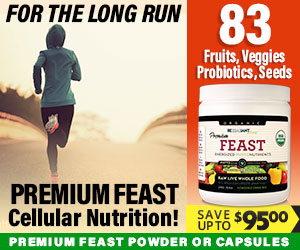- 1. Berries: Natureâs Powerful Antioxidant Boosters
- 2. Green Leafy Vegetables: Nutrient-Dense Antioxidants
- 3. Nuts and Seeds: Heart-Healthy Antioxidant Sources
- 4. Cruciferous Vegetables: Detox and Antioxidant Power
- 5. Citrus Fruits: Vitamin C-Rich Natural Protectors
- 6. Dark Chocolate and Cacao: Indulgent Antioxidants
- 7. Herbs and Spices: Potent Antioxidant Boosters
- 8. Legumes: Fiber-Rich Antioxidant Powerhouses
- 9. Colorful Vegetables: Plants Brimming with Antioxidants
- 10. FAQs About Whole Food Antioxidants
1. Berries: Natureâs Powerful Antioxidant Boosters
Rich in Polyphenols and Flavonoids
Berries like blueberries, strawberries, and raspberries are among the top sources of whole food antioxidants in 2025. Their vibrant color signals a high concentration of polyphenols and flavonoids, which have been linked to reduced inflammation and improved cellular health. Research shows that consuming berries regularly can help lower the risk of chronic diseases including heart disease and certain cancers.
Scientific studies indicate that the antioxidants in berries can neutralize free radicalsâunstable molecules that cause cellular damage. For example, a 2024 study published in health journals highlights that daily berry intake can increase antioxidant levels in the body significantly. Incorporating berries into smoothies, salads, or as snacks is an easy way to boost your antioxidant intake naturally.
If you’re looking to maximize antioxidant benefits, opt for fresh, organic berries and aim to include a variety of colors. Frozen berries are also a good option and retain most nutrients. Remember, in 2025, berries remain a delicious and effective way to support overall health through whole food antioxidants.
Practical Tips for Incorporation
- Add berries to your breakfast oatmeal or cereal.
- Blend berries into smoothies for a nutritious drink.
- Use berries as toppings on yogurt or ice cream.
2. Green Leafy Vegetables: Nutrient-Dense Antioxidants
Spinach, Kale, and Swiss Chard as Antioxidant Powerhouses
Green leafy vegetables such as spinach, kale, and swiss chard are packed with antioxidants like lutein, zeaxanthin, and beta-carotene. These nutrients help protect your eyes from aging and damage, which is especially relevant as we age into 2025 and beyond. Their high vitamin C and E content further contribute to enhanced immune response and skin health.
In recent research, consuming leafy greens has been associated with reduced inflammation and improved cellular function. Their high fiber content also supports gut health, which is crucial for absorbing antioxidants efficiently. Incorporating a variety of leafy greens in salads, smoothies, or sautés is a strategic way to optimize your antioxidant intake.
For those wanting to maximize benefits, choose organically grown greens to reduce exposure to pesticides. In 2025, more people are recognizing leafy greens as essential to a balanced, antioxidant-rich diet.
Tips and Tricks
- Add raw spinach or kale to your morning smoothie.
- Mix greens into grain bowls or wraps for added nutrition.
- Try sautéed greens as a side dish with garlic and olive oil.
3. Nuts and Seeds: Heart-Healthy Antioxidant Sources
Almonds, Walnuts, and Flaxseeds
Nuts and seeds are excellent sources of vitamin E, selenium, and other antioxidants that support heart health and reduce oxidative stress. For instance, walnuts contain high levels of polyunsaturated fats and antioxidants like ellagic acid, which combat inflammation.
Research from 2024 highlights that including a handful of mixed nuts daily can improve vascular function and lower LDL cholesterol levels. Flaxseeds, rich in lignans, also provide potent antioxidant effects and omega-3 fatty acids beneficial for brain health.
Incorporate nuts and seeds into your diet as snacks, toppings, or ingredient mixes. Choosing raw or dry-roasted options in 2025 ensures you get maximum antioxidant benefits without added unhealthy fats or preservatives.
Practical Tips
- Add chopped nuts to your oatmeal or yogurt.
- Sprinkle seeds over salads or roasted vegetables.
- Use nut butters as spreads or ingredients in smoothies.
4. Cruciferous Vegetables: Detox and Antioxidant Power
Broccoli, Brussels Sprouts, and Cauliflower
Cruciferous vegetables are renowned for their natural detoxifying properties thanks to compounds like sulforaphane. These vegetables contain high levels of vitamin C and carotenoids, making them superb whole food antioxidants.
Studies in 2025 have shown that regular consumption of cruciferous vegetables supports enzyme production that helps eliminate toxins and reduce oxidative stress. They are also linked to a lower risk of cancers and chronic illnesses.
To enjoy maximum benefits, steam or lightly sauté cruciferous vegetables to preserve their nutrient content. Adding them to your weekly meals can be both delicious and health-boosting.
Tips for Incorporation
- Include broccoli or Brussels sprouts in stir-fries or roasted vegetable dishes.
- Add cauliflower to salads for a crunchy texture.
- Make vegetable-based soups or smoothies for added antioxidants.
5. Citrus Fruits: Vitamin C-Rich Natural Protectors
Oranges, Grapefruits, and Lemons
Citrus fruits are among the best sources of vitamin C, a powerful natural antioxidant. In 2025, they continue to be essential for immune health, skin vitality, and reducing oxidation in cells. The flavonoids found in citrus also support cardiovascular health.
Recent studies show that consuming citrus regularly can improve antioxidant defense systems, lowering inflammation markers. Their tangy flavor makes them versatile in salads, beverages, or as standalone snacks.
Maximize antioxidant intake by choosing fresh, organic citrus and consuming in the morning or as a snack during the day. Remember, citrus fruits are a cornerstone of a balanced diet focused on whole food antioxidants in 2025.
Practical Tips
- Squeeze fresh lemon into water or tea for an antioxidant boost.
- Add orange segments to salads or yogurt bowls.
- Make citrus-based smoothies with other antioxidant-rich fruits.
6. Dark Chocolate and Cacao: Indulgent Antioxidants
Polyphenols and Flavonoids in Cacao
Dark chocolate and raw cacao are surprisingly potent sources of antioxidants, particularly flavonoids. In 2025, they are recognized as beneficial for cardiovascular health, lowering blood pressure, and improving blood flow.
Research demonstrates that moderate intake of high-percentage cacao (70% and above) can enhance antioxidant levels in the body. Their rich, indulgent flavor makes it easy to include them in healthy dietsâthink dark chocolate squares or cacao nibs sprinkled on desserts.
Huge Discount on the Best Certified Organic Whole Food Supplement!
Opt for minimally processed cacao products to get the maximum antioxidant benefit without added sugars or processed fats. Enjoy responsibly in moderation to support overall health through natural whole food antioxidants.
Tips for Enjoyment
- Choose high-quality dark chocolate with at least 70% cacao.
- Add cacao nibs to smoothies or breakfast bowls.
- Try cacao powder in healthy baking recipes.
7. Herbs and Spices: Potent Antioxidant Boosters
Turmeric, Cinnamon, and Cloves
Herbs and spices are often overlooked sources of whole food antioxidants, yet they contain concentrated active compounds. Turmeric, for example, contains curcumin, which has powerful anti-inflammatory and antioxidant properties. Similarly, cinnamon and cloves are rich in polyphenols, helping combat free radicals.
In 2025, integrating these herbs into daily cooking can significantly boost your antioxidant defenses. They not only enhance flavor but also provide health benefits supported by ongoing research.
Use turmeric in curries, add cinnamon to oatmeal or coffee, and sprinkle cloves into baked goods or teas. Natural, flavorful, and potentâherbs and spices are essential in a balanced diet centered on whole food antioxidants.
Practical Usage Tips
- Add turmeric to stir-fries and stews.
- Mix cinnamon into smoothies or baked desserts.
- Use cloves to flavor teas or roasted vegetables.
8. Legumes: Fiber-Rich Antioxidant Powerhouses
Beans, Lentils, and Chickpeas
Legumes are excellent sources of antioxidants like polyphenols, along with dietary fiber and plant-based protein. These nutrients help reduce inflammation and support gut health, which is vital for effective absorption of antioxidants.
Data from 2024 indicates that consuming legumes regularly lowers the risk of metabolic syndrome and supports cardiovascular health. They are versatile foodsâperfect in soups, salads, or as side dishesâthat can easily be included in a 2025 diet.
Choosing minimally processed, dried, or canned legumes (preferably low-salt) ensures maximum nutritional benefits. Incorporating legumes daily supports a comprehensive approach to whole food antioxidants and overall wellness.
Incorporation Ideas
- Prepare hearty bean soups or chili.
- Mix lentils into salads or grain bowls.
- Use chickpeas as snacks or in hummus.
9. Colorful Vegetables: Plants Brimming with Antioxidants
Carrots, Bell Peppers, and Eggplants
Colorful vegetables are packed with diverse antioxidants such as carotenoids, anthocyanins, and other phytonutrients. These compounds provide vibrant hues and contribute significantly to preventing oxidative damage.
In 2025, eating a rainbow of vegetables is recommended as part of a strategy for maximizing whole food antioxidants. For instance, red and orange peppers contain vitamin A precursors, while purple eggplants provide anthocyanins that support brain health.
Incorporate these vegetables into your daily meals by roasting, stir-frying, or raw snacking. A colorful plate not only looks appealing but also supplies a broad spectrum of natural antioxidants.
Tips and Suggestions
- Prepare mixed vegetable stir-fries for dinner.
- Add sliced peppers and carrots to salads or wraps.
- Enjoy roasted eggplant as a side or in dips.
10. FAQs About Whole Food Antioxidants
What are whole food antioxidants?
Whole food antioxidants are naturally occurring compounds found in unprocessed or minimally processed foods, such as fruits, vegetables, nuts, seeds, and herbs. They help neutralize free radicals, support immune function, and promote overall health.
Why are whole food antioxidants preferable to supplements?
Whole food antioxidants come with a spectrum of nutrients that work synergistically, providing more comprehensive benefits than isolated supplements. Plus, whole foods contain fiber and other bioactive compounds that enhance antioxidant absorption and health impact.
How can I incorporate more whole food antioxidants into my diet in 2025?
Focus on colorful, minimally processed foodsâberries, leafy greens, nuts, spices, and legumes. Diversify your meals with these foods, and aim for a rainbow of colors daily. Practical tips include adding berries to breakfast, mixing herbs into dishes, and including a variety of vegetables in every meal.
Are there any risks associated with consuming antioxidants from whole foods?
Generally, whole foods are safe and beneficial. However, some people should monitor consumption of certain foods, like nuts or legumes, if they have allergies or digestive issues. Balance and variety are key to maximizing benefits and minimizing any risks.
What trends are shaping the future of whole food antioxidants in 2025?
In 2025, the trend toward organic, locally-sourced foods, and personalized nutrition plans emphasizes the role of whole food antioxidants. Advances in food science aim to enhance natural antioxidant content and bioavailability, making it easier for everyone to harness the power of natural ingredients.
Conclusion
In conclusion, understanding and incorporating the best whole food antioxidants into your diet is vital for optimal health in 2025. From vibrant berries to cruciferous vegetables and flavorful herbs, these natural foods provide potent, bioavailable compounds that fight oxidative stress and promote longevity. By intentionally choosing a variety of antioxidant-rich whole foods, you can support your immune system, improve cellular function, and enjoy a vibrant, healthy life. Remember, whole food antioxidants are more than just a trendâthey are the foundation of a balanced, healthful diet for a thriving you in 2025 and beyond.




